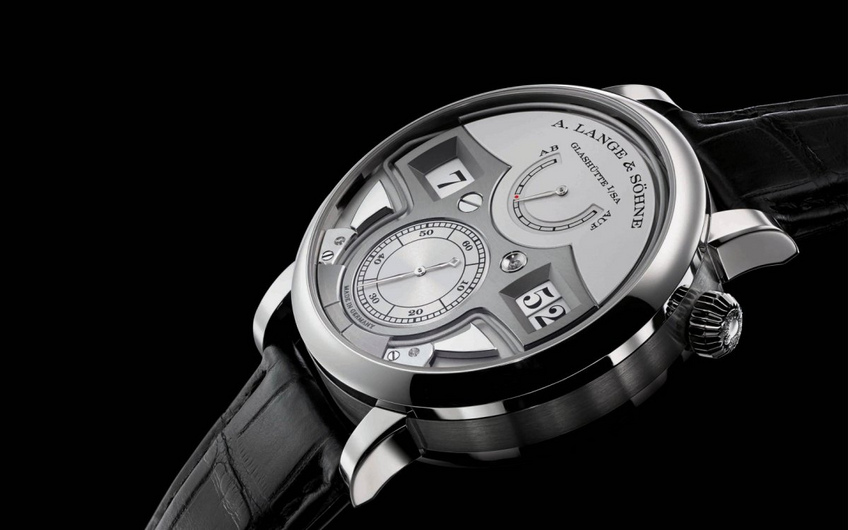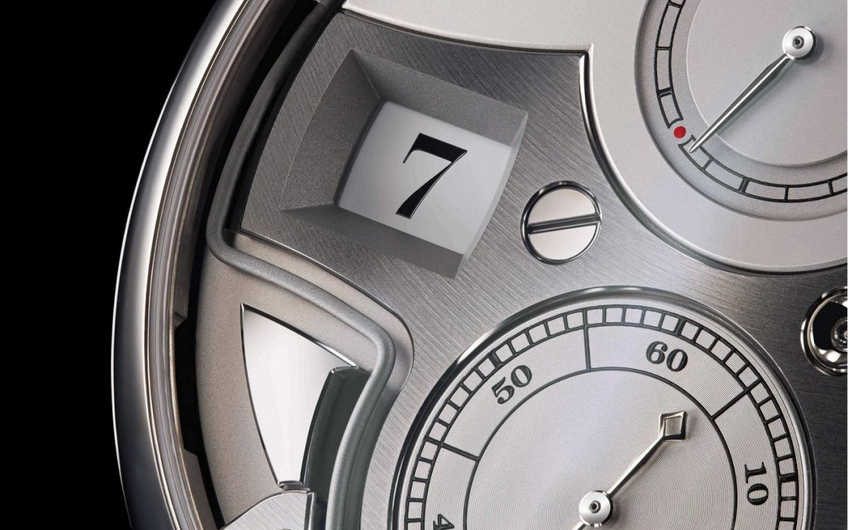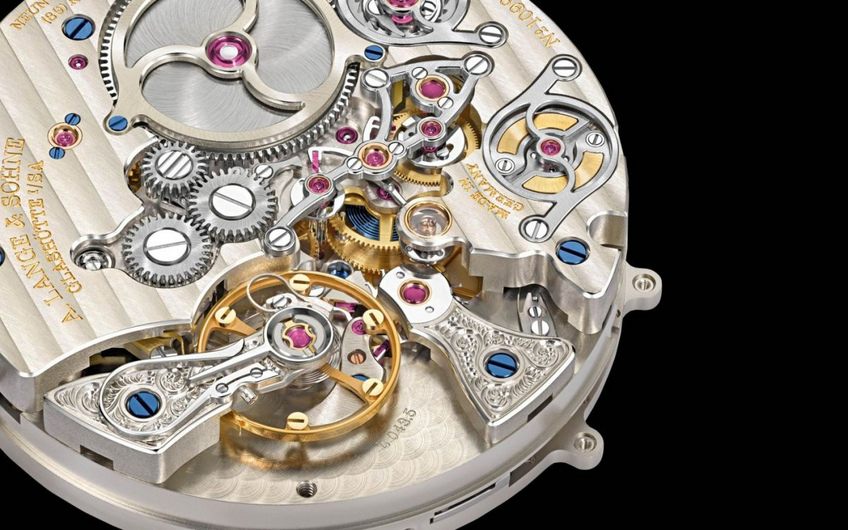
A.Lange & Söhne's decimal Zeitwerk Minute Repeater: the sound of revolution
If you already have a watch featuring a very original digital time indication with jumping hours, then you really need a way to show it off musically in an off-the-wall sort of way.
By daring to express time decimally (i.e., each digit is dinged as it appears on the digital display), the famous Saxon brand has also skirted revolution...

Whichever way you look at it, this watch strives for total originality while maintaining in each detail the tradition that makes it such a coveted piece. The way time is indicated is actually borrowed from the famous digital clock on cylinders that is in the main auditorium of the Semper opera house in Dresden. Obviously, replicating such a mechanical work for a wristwatch is quite an achievement. Adding a minute repeater makes it a tour de force. And the choice of having it ring decimally ultimately makes total sense since the originality of the ends – i.e. the actual display – does, for the most part, justify the means of expressing time in sound as well.
So, the purist will no doubt wonder about the choice of simulcasting the time in a manner that would seem a touch revolutionary. Well, in fact, it really is revolutionary, because it was a way of reading time that became the norm for a brief period during the French Revolution. But the duodecimal system finally won the day, because it allowed the dial to be divided into the three equal arcs that the eye and mind had probably gotten used to by that time. The ear, on the other hand, less attuned to these subtleties, can easily adapt to hearing the hours being rung out decimally or traditionally.

The art of leaving beaten paths
But for all intents and purposes, not everyone is the A. Lange & Söhne manufacture. You really need a passion for beautiful engineering to succeed in building a repetition mechanism where the hammers and gongs are visible on the dial. All in all, this approach makes for quite a powerful chiming, because the sound is always more easily transmitted when the gongs are close to the sapphire crystal. On the other hand, the rather original shape of the gong (which is less important than the cross-section and length) does not influence the sound quality or the clarity of the tones. The only tiny, tiny down side is the retarder system: the repeater wheel seemed quite loud when you are not wearing the watch.Having said that, it is the only component that is on the movement side of the watch, so the sound produced may well be absorbed by the wrist in daily practice.
Also worthy of note is the repeater's slider. As with the systems that initiate a grande sonnerie complication, it is not used to arm a separate spring dedicated to the minute repeater, but rather takes its energy from the mainspring.

Finally, this piece, which boasts exceptional functionality, has generated six different patents.Among the most interesting ones are those covering the mechanism used to decouple the chiming system when the watch has only twelve hours of power left, and the one preventing the minute disc from being set if the repeater is chiming. (Albeit, the mechanism does maintain the watch's punctuality, and once the repeater sequence has come to an end, the discs correct themselves). Another important note for the record: the watch runs on the L043.5 caliber, with manual winding. It is made up of 771 components, including 93 rubies. The 44.2-millimeter case comes in platinum, while the dial is, as usual, in solid silver. The watch is worn on an alligator bracelet closed with a platinum folding clasp.This is a superb piece indeed – retail price is almost CHF 440,000 – with an original way of reading time and an outstanding minute repeater mechanism (other existing models, the Seiko Spring Drive Minute Repeater and Kari Voutilainen).







